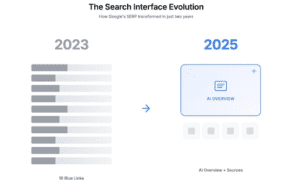MVPs, or minimum viable products, have become a popular way to test new product ideas. But there’s more to MVPs than just putting something out there and seeing what happens. To make the most of an MVP strategy, you need to understand a few key things. Here are four things that all product managers should know about MVPs.
source: medium.com
What is an MVP and why do you need one?
An MVP is a minimum viable product or a version of your product that contains only the core features and functions needed to start testing it with real customers. An MVP helps you gather feedback from real users as quickly and cheaply as possible so that you can make adjustments before investing more time and resources into your product.
Why is an MVP important?
There are several reasons why an MVP is a crucial part of the product development process. First, it allows you to test your ideas and assumptions about what customers want and need from your product, without investing too much time or money into building it. This helps you avoid wasting resources on products that aren’t likely to succeed, and instead focus your efforts on creating something that has real potential.
Second, an MVP can help you gather valuable feedback from customers and users, which can be used to further refine and improve your product. This helps you build a better product over time, rather than just making incremental changes without any real sense of what your customers want or need.
Third, an MVP is a great way to build momentum and excitement around your new product. By launching an MVP that customers can use and try out, you can generate interest and buzz around your product before it’s even fully developed or released. This can help increase engagement with your product, as well as build trust and credibility among potential users.
There are many other benefits to using an MVP when developing your product, but the key takeaway is that an MVP can help you test and refine your product quickly and efficiently so that you can build something truly valuable for your customers. If you’re considering creating an MVP for your product, be sure to take these factors into account and work with your team to come up with the right approach.
How do you create an MVP?
Creating an MVP can be a bit of a challenge, as it requires careful planning and consideration of potential risks and pitfalls. Several key elements go into creating an effective MVP product design, including identifying your target audience, choosing the right features to include, and testing your product with real customers.
One important step is to do market research and customer interviews, to get a better sense of what your target audience is looking for in a product. This will help you determine the key features and functions that are essential for your MVP, as well as any additional features or capabilities that you can include later on.
Another important step is to test your MVP with real customers and users. This can be done through surveys, focus groups, or other forms of market research, and will give you valuable feedback on how well your product is meeting their needs and expectations.
And the last but not least, you should always be prepared to iterate and adapt your MVP based on the feedback that you receive. This means being open to making changes, as well as thinking critically about whether or not those changes will improve your product over time.
Overall, the key to creating an effective MVP is to work closely with your team and partners, listen carefully to customer feedback, and make iterative changes based on what you learn. With the right approach, you can create an MVP that is truly aligned with your customer’s needs and helps you build a successful product over time.
What are the benefits of having an MVP?
We have already talked about why MVP product design is important, but now we will dive a little bit deeper into some of the key benefits of having an MVP.
One major benefit of having an MVP is that it allows you to test and refine your product before investing too much time or money into building it. This helps you avoid wasting resources on products that are unlikely to succeed, and instead focus your efforts on creating something that has real potential.
Second, an MVP can help you gather valuable feedback from customers and users, which can be used to further refine and improve your product. This helps you build a better product over time, rather than just making incremental changes without any real sense of what your customers want or need.
Third, an MVP is a great way to build momentum and excitement around your new product. By launching an MVP that customers can use and try out, you can generate interest and buzz around your product before it’s even fully developed or released. This can help increase engagement with your product, as well as build trust and credibility among potential users.
And finally, having an MVP can help you build a stronger, more cohesive team. By working together to develop an MVP, your team will gain valuable experience and expertise in product design and development. This can set the foundation for future success as you continue building out your product over time.
Can you have too much of an MVP?
At first, the idea of having an MVP might seem like a great way to quickly test and refine your product before investing too much time or money into building it. And while this is generally a good approach, there are times when having an MVP could acrt your product in the long run.
One potential issue with having too much of an MVP is that it can lead to feature bloat and a cluttered product design. When you try to pack too many features into your MVP, it becomes harder for customers and users to discern what the product does or how to use it. This makes it more difficult for them to engage with your product, which means less interest and lower conversion rates over time.
Second, having too much of an MVP can also lead to customer confusion and frustration. Your customers may not understand what your product does or how it works, which means they are less likely to engage with it or recommend it to others. This is particularly true if you launch an overly complex or vague MVP without explaining its purpose or how to use it.
Final Words
At the end of the day, having too much of an MVP can ac detrimental to your product. But with the right approach and planning, you can create an MVP that strikes a good balance between testing and refining your product and meeting the needs of your customers. By gathering valuable feedback from real users, carefully considering your product features, and remaining focused on your end goal, you can create a successful MVP that sets the stage for long-term success.
Do you have any questions about what it takes to create an MVP? Let us know in the comments below!




































